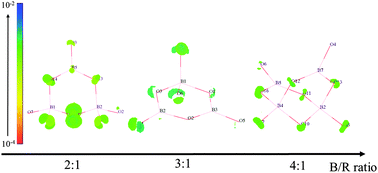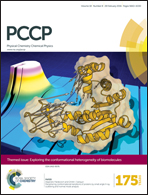Active performance of tetrahedral groups to SHG response: theoretical interpretations of Ge/Si-containing borate crystals†
Abstract
As potential candidates for deep-UV nonlinear optical (NLO) crystals, borosilicates and borogermanates, which contain NLO-active groups such as B–O, Si–O and Ge–O, have fascinated many scientists. The crystal structures, electronic structures and optical properties of seven borates in different B/R (R = Si, Ge) ratios have been studied using DFT methods. Through the SHG-density, we find that besides the recognized contribution of the π-conjugation configuration of BO3 to second harmonic generation (SHG), the tetrahedra have a non-negligible influence. This is because the non-bonding p orbitals of the bridging oxygen in the tetrahedra are observably closer to the Fermi level than those in BO3, which is observed in the PDOS of Rb4Ge3B6O17 and RbGeB3O7. This conclusion would be very meaningful in the understanding of the relationship between the crystal structure and nonlinear optical properties.


 Please wait while we load your content...
Please wait while we load your content...